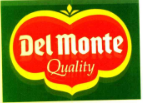DEL MONTE FOODS successfully blocks the registration of a seemingly dissimilar copycat mark
YANG Mingming & LI Chen, 15 November 2024, first published by Lexology
Del Monte Foods is a leading American food production and distribution company based in California. It is known for its popular brands like Del Monte, S&W, and Contadina. The company was founded in 1886, and the Del Monte brand was officially introduced in 1892. In 1916, the predecessor company, California Packing Corporation, also known as Calpak, which was formed through a merger of four large California canning companies, rebranded itself as Del Monte Corporation. The company began marketing its products under the Del Monte brand and expanded its operations to include canneries in various states and overseas.
On July 4, 2022, the opposed mark “ ” was filed by an obstinate trademark squatter called Quanzhou Qiandu Ecological Foods Ltd. (hereinafter referred to as Qiandu) in class 29, designating goods “canned fruit, canned fish, marinated olives, peanut butter, Auriculariales”, among others. Qiandu had repeatedly filed copycat trademarks mimicking the prior registered trademarks of Del Monte Foods and has been on the latter’s radar for years.
” was filed by an obstinate trademark squatter called Quanzhou Qiandu Ecological Foods Ltd. (hereinafter referred to as Qiandu) in class 29, designating goods “canned fruit, canned fish, marinated olives, peanut butter, Auriculariales”, among others. Qiandu had repeatedly filed copycat trademarks mimicking the prior registered trademarks of Del Monte Foods and has been on the latter’s radar for years.
Qiandu used to register in class 30 (designating honey, soy sauce, ketchup and condiment) a combination mark “ ” (Qiandu CALPAK 1916 & device), which specifically incorporates the distinguishing device from the house mark
” (Qiandu CALPAK 1916 & device), which specifically incorporates the distinguishing device from the house mark  of Del Monte Foods and the explicit reference to the latter’s predecessor company Calpak and the year of its rebranding. After the aforesaid trademark was invalidated, Qiandu changed its tactics and shifted away from filing strikingly similar copycat marks. By tweaking the shape of the device of the earlier copycat mark, adding some decorative elements and placing it against a green background, Qiandu created the opposed trademark
of Del Monte Foods and the explicit reference to the latter’s predecessor company Calpak and the year of its rebranding. After the aforesaid trademark was invalidated, Qiandu changed its tactics and shifted away from filing strikingly similar copycat marks. By tweaking the shape of the device of the earlier copycat mark, adding some decorative elements and placing it against a green background, Qiandu created the opposed trademark  , a seemingly dissimilar mark.
, a seemingly dissimilar mark.
In the opposition proceeding, apart from identifying the similarities the opposed trademark share with the cited mark, Del Monte Foods also underscored the bad faith of the opposed party in imitating many other famous food brands like “四季寶” (Chinese equivalent of Skippy).
On September 15, 2023, the CNIPA upheld the opposition and disapproved the registration of the opposed mark. The CNIPA affirmed that:
1. The opposed mark is similar to the cited mark in terms of visual effect and design, and they constitute similar marks on designated goods that are partially similar to those of the cited mark, which is likely to cause confusion and misidentification among the consumers.
2. The opposed party has exhibited blatant bad faith in copying others’ marks that have been used in prior and acquired certain reputation. In applying for the opposed mark, the opposed party intentionally duplicates, copies and imitates other’s prior mark, which breaches the good faith principle, creates confusion over source of goods, prejudices fair competition in the market and contravenes the legislative spirit of the Trademark Law (banning the acquisition of trademark registration by fraudulent or other unfair means).
The outcome is quite inspiring.
Article 30 of the Trademark Law aims to prevent trademark confusion by banning the registration of a trademark that is identical with or similar to other’s prior mark filed on or registered on identical or similar goods. The examiners adopted a holistic approach in ascertaining the likelihood of confusion (LOC). Other than the degree of similarity between marks, the examiners also weighed up the similarity of goods, the distinctiveness and reputation of the cited marks, and in particular whether the trademark applicant acted in bad faith in the LOC assessment.
As the CNIPA is taking a hardline and ratcheting up efforts against bad faith trademark filings and registrations, trademark squatters are adapting their tricks to game the system. They are employing all sorts of means to conceal and even whitewash their bad faith. Therefore, evidence collection pertaining to the filing record, trademark use status and other factors that may help establish bad faith on the adverse party should be high on the radar of brand owners.




